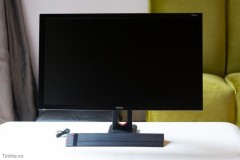- Rapid, profound and durable responses across multiple dosing groups with favorable safety profile observed—positioning barzolimab as a potential best-in-class addition to a historically limited treatment landscape -
- At week 12, 56% of all patients in the 1.5 mg/kg, 3.0 mg/kg and 4.5 mg/kg dose groups had complete response and 76% had well-controlled disease (UAS7/UCT) -
- At week 24, 53% of all patients in the 1.5 mg/kg and 3.0 mg/kg dose groups had complete response and 70% experienced well-controlled disease (UAS7/UCT); additional follow up ongoing in 4.5 mg/kg dose -
- 37% of treated patients had prior omalizumab therapy and still had similar clinical benefit improvement as the overall population -
- Company to host webcast on Sunday, February 26 at 4:00 pm CT/5:00 pm ET -
HAMPTON, N.J., Feb. 26, 2023 (GLOBE NEWSWIRE) -- Celldex Therapeutics, Inc. (NASDAQ:CLDX) announced today updated data from the Company’s Phase 1b clinical trial of barzolvolimab in patients with moderate to severe chronic spontaneous urticaria (CSU) refractory to antihistamines. Barzolvolimab is a humanized monoclonal antibody that specifically binds the receptor tyrosine kinase KIT with high specificity and potently inhibits its activity, which is required for the function and survival of the mast cell. CSU is characterized by the occurrence of hives or wheals for 6 weeks or longer without identifiable specific triggers or causes. Treatment options for patients with CSU are limited and there are no approved therapies for patients who do not respond to omalizumab.
The data were presented by Dr. Marcus Maurer, Professor of Dermatology and Allergy at Charité – Universitätsmedizin in Berlin, in a poster presentation (#410) as part of the American Academy of Allergy, Asthma & Immunology (AAAAI) Annual Meeting 2023.
'These exceptional results with barzolvolimab show its potential ability to bring meaningful improvements to patients suffering from this often very severe and debilitating disease,' said Marcus Maurer, M.D. 'The novel mechanism of barzolvolimab in depleting mast cells offers a potential much needed treatment option for patients who suffer from chronic spontaneous urticaria, including patients who are not seeing meaningful benefits from the current standard of care. What’s more, these results distinguish barzolvolimab as a valuable tool to help us understand the role of mast cells in many other diseases.'
Meaningful symptom improvement as measured through the urticaria activity score over 7 days (UAS7) was achieved across all dose levels evaluated with sustained activity observed with the 1.5 mg/kg and greater dose levels, consistent with the profound and sustained reduction of tryptase associated in these groups. Mean UAS7 reduction at week 12 was 67% in the 1.5 mg/kg dose group (n=8), 67% in the 3.0 mg/kg dose group (n=9) and 82% in the 4.5 mg/kg dose group (n=9). Complete response as measured by UAS7=0 was 56% in patients treated with the 1.5 mg/kg, 3.0 mg/kg and 4.5 mg/kg doses at week 12. At week 24, 16 weeks after the last dose, 53% of all patients treated with the 1.5 mg/kg and 3.0 mg/kg doses (additional follow-up ongoing in 4.5 mg/kg dose) had a complete response. These data show that multiple doses of barzolvolimab resulted in rapid dose-dependent decreases in itch and hives with durable and prolonged symptom control.
Importantly, administering multiple doses of barzolvolimab continues to demonstrate a favorable safety profile. Most adverse events (AEs) were mild or moderate in severity and resolved while on study. Taken together with strong activity data, these data continue to support the ongoing Phase 2 clinical trials in chronic urticaria and expanded barzolvolimab development into other mast cell related indications.
'We are extremely pleased with these further results which once again demonstrated strong clinical activity, rapid onset and sustained durability with a well-tolerated safety profile, including in patients who had previously taken omalizumab,' commented Anthony S. Marucci, President and Chief Executive Officer of Celldex Therapeutics. 'With prolonged symptom control for up to 24 weeks, which is 16 weeks after the last dose, these data further demonstrate barzolvolimab's unique mechanism and its potential to provide meaningful improvement to patients suffering from diseases driven by mast cells. These strong results support our ongoing Phase 2 studies in urticaria and we look forward to completing accrual of the Phase 2 CSU study by the end of the third quarter and reporting topline data either late this year or in the first quarter of 2024.”
Summary of Data from Phase 1b CSU Trial of Barzolvolimab
As of the data cut-off on November 29, 2022, enrollment was complete with 45 patients with moderate to severe CSU refractory to antihistamines enrolled and treated [35 barzolvolimab (n=9 in 0.5 mg/kg; n=8 in 1.5 mg/kg; n=9 in 3.0 mg/kg; n=9 in 4.5 mg/kg) and 10 placebo]. The 0.5 mg/kg, 1.5 mg/kg and 3.0 mg/kg cohorts had completed study participation through 24 weeks; 6 of 9 patients in the 4.5 mg/kg cohort had completed through the week 20 visit. Complete data are included for all patients in dose levels through 3.0 mg/kg through 24 weeks. All available data for the 4.5 mg/kg and placebo dose levels are presented for adverse events. The activity table below includes data through week 20 for the 4.5 mg/kg dose level. Data for the 0.5 mg/kg and placebo group are only included through week 12 because, as expected, most patients from these groups had significant symptoms ahead of week 24 and discontinued follow up. Two patients did not receive all doses of study treatment [4.5 mg/kg (1), placebo (1)].
Clinical Activity Results
- Barzolvolimab results in rapid, marked and durable responses in patients with moderate to severe CSU refractory to antihistamines, including patients with prior omalizumab treatment.
- The 1.5 mg/kg, 3.0 mg/kg and 4.5 mg/kg dose groups showed similar markedly improved urticaria symptoms and disease control with sustained durability up to 24 weeks.
- Mean reduction from baseline in urticaria activity (UAS7) at week 12 of 67% in the 1.5 mg/kg dose group (n=8), 67% in the 3.0 mg/kg dose group (n=9) and 82% in the 4.5 mg/kg dose group (n=9).
- Complete response (UAS7=0) at week 12 of 57% in the 1.5 mg/kg dose group, 44% in the 3.0 mg/kg dose group and 67% in the 4.5 mg/kg dose group.
- Well-controlled disease (UCT≥ 12) at week 12 of 75% in the 1.5 mg/kg dose group, 63% in the 3.0 mg/kg dose group and 89% in the 4.5 mg/kg dose group.
- During post-treatment follow up, 7 of 8 (88%) patients who had been treated with barzolvolimab 1.5 mg/kg or 3.0 mg/kg and had a complete response (UAS7=0) at week 12 maintained their complete response through 24 weeks. Two additional patients treated with these doses who were not a complete response at week 12 had a complete response at week 24. 6 of 6 (100%) patients treated with barzolvolimab 4.5 mg/kg maintained their complete response through their last assessment with additional follow up ongoing.
- Patients with prior omalizumab therapy had similar symptom improvement as all patients.
- Rapid onset of responses after initial dosing and sustained durability were observed; onset as early as 1 week after the first dose and prolonged symptom control in some patients for up to 24 weeks.
- Tryptase suppression, indicative of mast cell depletion, paralleled symptom improvement, demonstrating the impact of mast cell depletion on CSU disease activity.
Summary of Clinical Activity Assessments at week 12 and week 24* for 0.5 mg/kg, 1.5 mg/kg, 3.0 mg/kg and 4.5 mg/kg dose groups
| All Patients | 0.5 mg/kg Q4W at Week 12 | 1.5 mg/kg Q4W at Week 12/24 | 3.0 mg/kg Q8W at Week 12/24 | 4.5 mg/kg Q8W at Week 12/20 (Additional follow up ongoing) | Placebo at Week 12 | ||
| Baseline UAS7 (mean, range) | 31 (20 -39) | 29 (20 - 41) | 29 (16 - 42) | 28 (18 - 38) | 36 (19 - 42) | ||
| UAS7 Changes | |||||||
| Mean Score Change in UAS7 From Baseline | -11 | -18 / -23 | -21 / -23 | -23 / -30 | -14 | ||
| Mean % Change in UAS7 From Baseline | -40 | % | -67% / -80% | -67% / -70% | -82% / -97% | -37 | % |
| Clinical Responses** | |||||||
| UAS7=0 (Complete Response) | 11 | % | 57% / 57% | 44% / 67% | 67% / 80% | 13 | % |
| UAS7 ≤ 6 (Well-controlled) | 22 | % | 57% / 57% | 67% / 67% | 67% / 100% | 13 | % |
| UCT ≥ 12 (Well-controlled) | 13 | % | 75% / 75% | 63% / 67% | 89% / 86% | 33 | % |
*Data for week 24 included only for dose levels with at least 50% of patients with data available at the timepoint; data not shown for 0.5 mg/kg and placebo dose levels as most patients had significant symptoms ahead of week 24 and discontinued follow up. Data at week 20 for 4.5 mg/kg with additional follow up ongoing.
The UAS7 score is calculated as the sum over 7 days of the daily intensity of itch (ISS7 itch severity score) and number of hives (HSS7 hives severity score). UAS7 values range from 0 to 42, with higher values reflecting higher disease activity. UCT has 4 items with 5 answer options (scored with 0-4 points); recall period of 4 weeks. Low points indicate high disease activity and low disease control. The minimum and maximum UCT scores are 0 and 16, with 16 points indicating complete disease control and ≥12 indicating well controlled disease.
** Clinical responses shown are the proportion of patients with the defined response at the specific timepoint. Patients with missing data at the timepoint are excluded.
Safety Results
Barzolvolimab was well tolerated with a favorable safety profile; effects of multiple dose administration were consistent with observations in single dose studies.
Most AEs were mild or moderate in severity and resolved while on study. The most common treatment emergent adverse events were hair color changes, COVID-19, headache, neutropenia and urinary tract infections (UTIs). UTIs and COVID-19 were reported as unrelated to treatment. There was one serious adverse event of salmonella gastroenteritis which was also not related to study therapy.
Changes in hematologic parameters were consistent with observations in single dose studies, with no pattern of further decreases with multiple doses; hematologic values generally remained within the normal range and returned to baseline levels during the follow up period. Five patients had decreases in neutrophil counts reported as AEs; four of which were previously reported in the EAACI 2022 data presentation. The pattern observed in the neutrophil changes was similar to the pattern seen in patients across the barzolvolimab program to date—generally transient, asymptomatic, and mild and typically occurring in patients with screening and baseline neutrophil counts at the lower end of the normal range on study initiation.
Study Design
The Phase 1b study is a randomized, double-blind, placebo-controlled clinical trial designed to assess the safety of multiple ascending doses of barzolvolimab in patients with moderate to severe CSU who remain symptomatic despite treatment with antihistamines. Secondary and exploratory objectives include pharmacokinetic and pharmacodynamic assessments, including measurement of tryptase and stem cell factor levels and clinical activity outcomes (impact on urticaria symptoms, disease control, clinical response) as well as quality of life assessments. The study enrolled 45 patients with CSU across four cohorts. Barzolvolimab was administered intravenously at 0.5 mg/kg every 4 weeks (3 doses), 1.5 mg/kg every 4 weeks (3 doses), 3 mg/kg every 8 weeks (2 doses), 4.5 mg/kg every 8 weeks (2 doses), as add-on treatment to H1-antihistamines, either alone or in combination with H2-antihistamines and/or leukotriene receptor agonists. Following completion of the 12 week treatment period, patients were followed for an additional 12 weeks or until resumption of symptoms, whichever was sooner. For additional information on this trial (NCT04538794), please visit www.clinicaltrials.gov.
Webcast
The Company will host a webcast presentation of the data on Sunday, February 26th at 4:00 pm CT (5:00 pm ET). The event will be webcast live and can be accessed by going to the 'Events & Presentations” page under the 'Investors & Media' section of the Celldex Therapeutics website at www.celldex.com.
About Celldex Therapeutics, Inc.
Celldex is a clinical stage biotechnology company dedicated to developing monoclonal and bispecific antibodies that address devastating diseases for which available treatments are inadequate. Our pipeline includes antibody-based therapeutics which have the ability to engage the human immune system and/or directly affect critical pathways to improve the lives of patients with inflammatory diseases and many forms of cancer. Visit www.celldex.com.
Forward Looking Statement
This release contains 'forward-looking statements' made pursuant to the safe harbor provisions of the Private Securities Litigation Reform Act of 1995. These statements are typically preceded by words such as 'believes,' 'expects,' 'anticipates,' 'intends,' 'will,' 'may,' 'should,' or similar expressions. These forward-looking statements reflect management's current knowledge, assumptions, judgment and expectations regarding future performance or events. Although management believes that the expectations reflected in such statements are reasonable, they give no assurance that such expectations will prove to be correct or that those goals will be achieved, and you should be aware that actual results could differ materially from those contained in the forward-looking statements. Forward-looking statements are subject to a number of risks and uncertainties, including, but not limited to, our ability to successfully complete research and further development and commercialization of Company drug candidates, including barzolvolimab (also referred to as CDX-0159), in current or future indications; the uncertainties inherent in clinical testing and accruing patients for clinical trials; our limited experience in bringing programs through Phase 3 clinical trials; our ability to manage and successfully complete multiple clinical trials and the research and development efforts for our multiple products at varying stages of development; the effects of the outbreak of COVID-19 on our business and results of operations; the availability, cost, delivery and quality of clinical materials produced by our own manufacturing facility or supplied by contract manufacturers, who may be our sole source of supply; the timing, cost and uncertainty of obtaining regulatory approvals; the failure of the market for the Company's programs to continue to develop; our ability to protect the Company's intellectual property; the loss of any executive officers or key personnel or consultants; competition; changes in the regulatory landscape or the imposition of regulations that affect the Company's products; our ability to continue to obtain capital to meet our long-term liquidity needs on acceptable terms, or at all, including the additional capital which will be necessary to complete the clinical trials that we have initiated or plan to initiate; and other factors listed under 'Risk Factors' in our annual report on Form 10-K and quarterly reports on Form 10-Q.
All forward-looking statements are expressly qualified in their entirety by this cautionary notice. You are cautioned not to place undue reliance on any forward-looking statements, which speak only as of the date of this release. We have no obligation, and expressly disclaim any obligation, to update, revise or correct any of the forward-looking statements, whether as a result of new information, future events or otherwise.
Company Contact
Sarah Cavanaugh
Senior Vice President, Corporate Affairs & Administration
(508) 864-8337
scavanaugh@celldex.com
Patrick Till
Meru Advisors
(484) 788-8560
ptill@meruadvisors.com

















